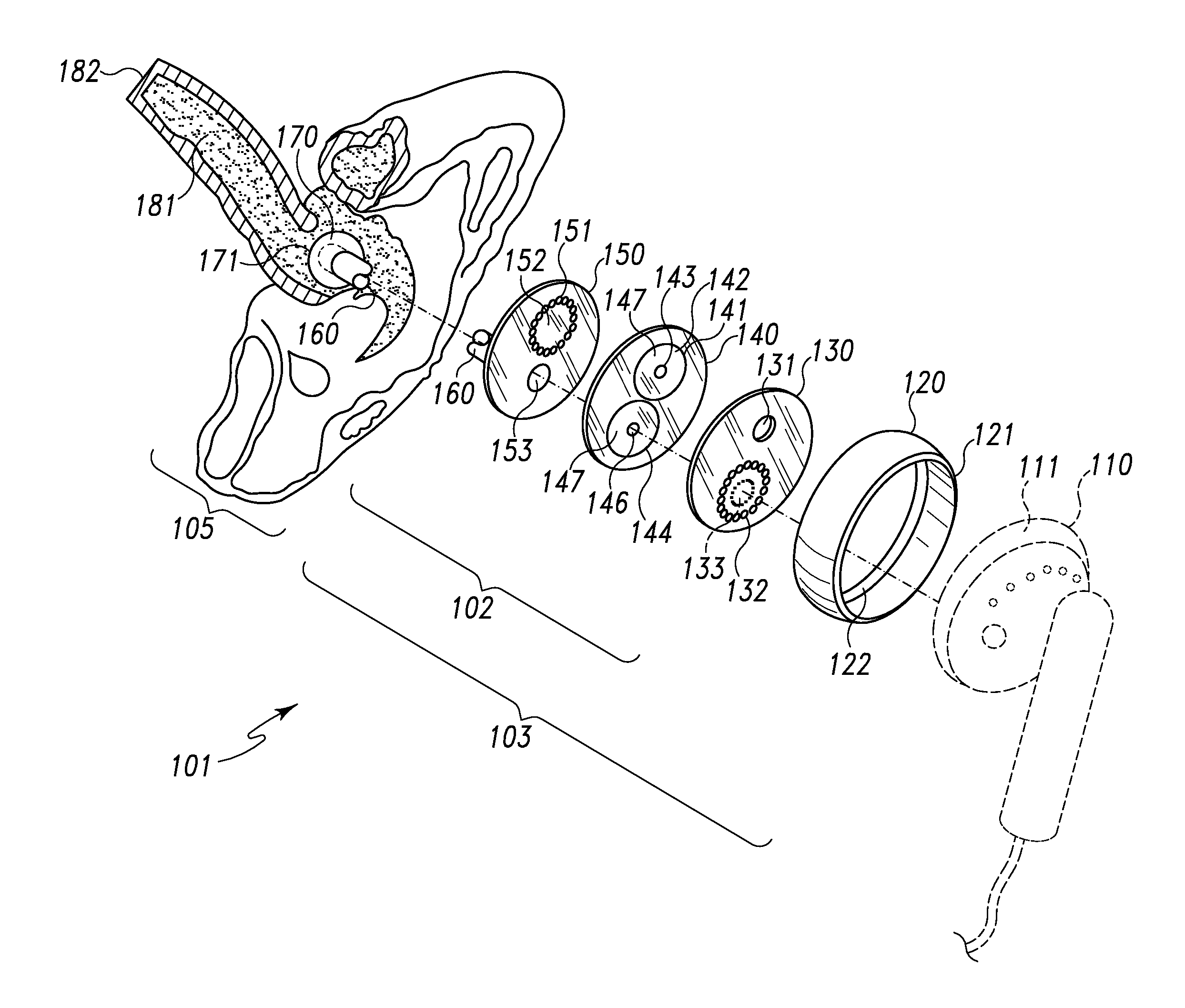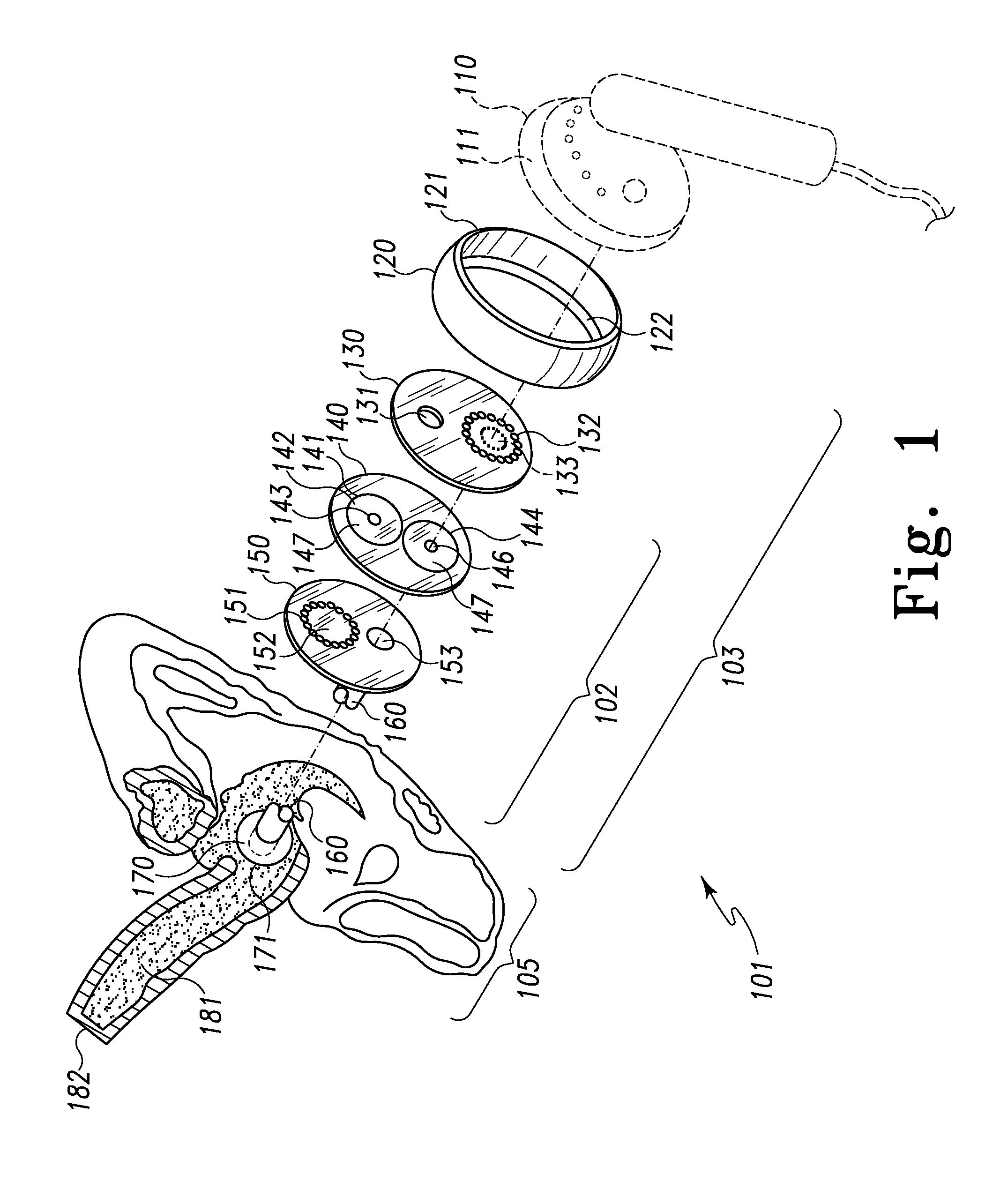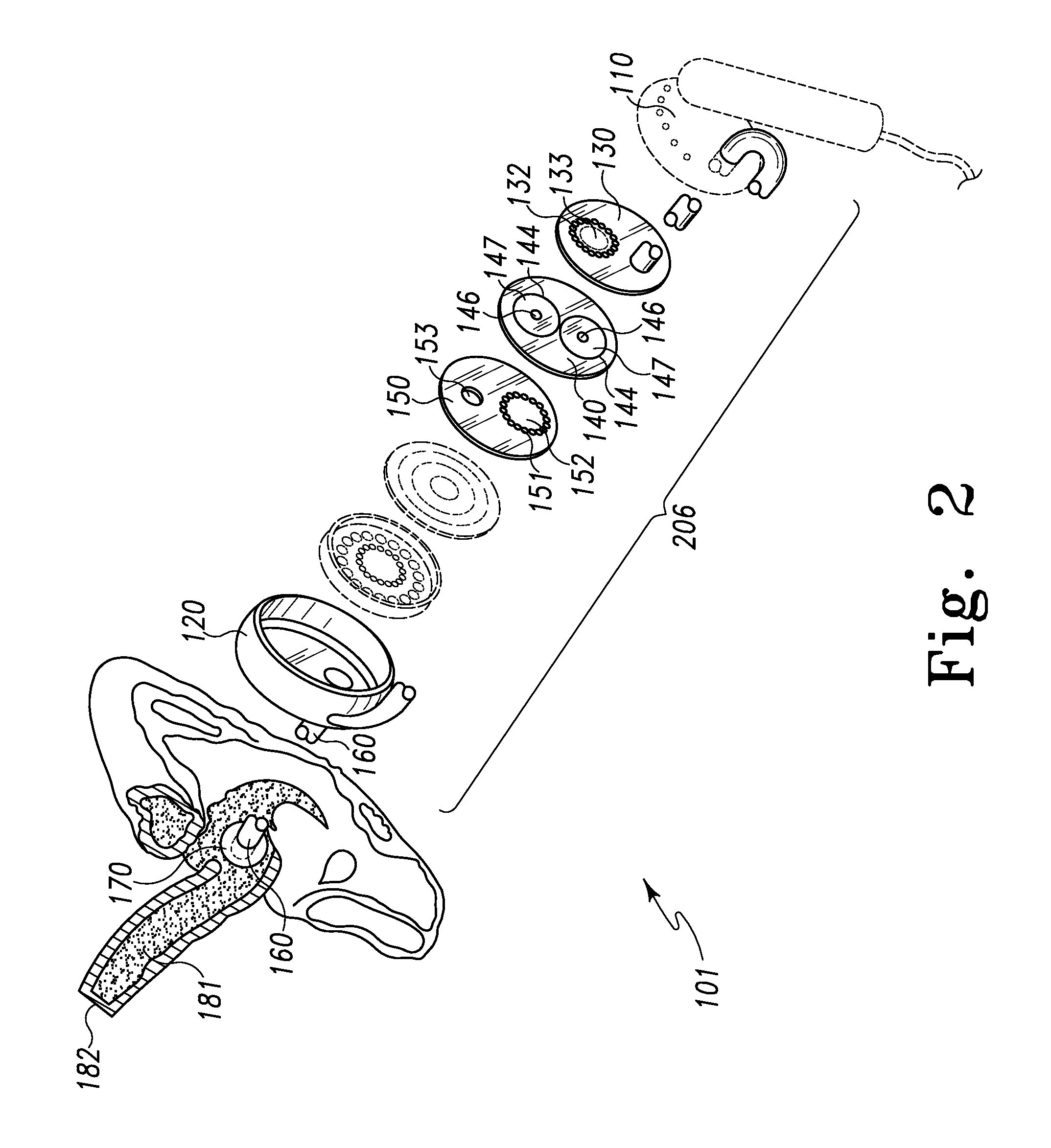Diaphonic acoustic transduction coupler and ear bud
a technology of diaphonic acoustic transduction coupler and ear bud, which is applied in the field of listening devices, can solve the problems of inability to easily overcome and limit the artificial sound and pressure concentrations extant in the device, and inability to distinguish sounds, so as to achieve superior fidelity to the listener and minimize listener fatigue
- Summary
- Abstract
- Description
- Claims
- Application Information
AI Technical Summary
Benefits of technology
Problems solved by technology
Method used
Image
Examples
example
Testing Method Utilized
[0145]In human anatomy, the auditory meatus or ear canal roughly averages a length ⅙th of the width of the head, as measured between the ears. In adults, this translates into approximately 18 to 30 mm for each canal, and places the middle ear behind the eyes which, together with the nose, mouth, sinus and other cavities, conduct sound waves into the acoustic chamber it contains. For purposes of these tests, an artificial canal of 25 mm was constructed from a length of compliant polymer tubing with an internal diameter of 8 mm. One end of the artificial canal provided means for the placement and acoustical sealing of a Crown® CM-311A microphone capsule, while the other provided an artificial auricle or outer ear cup for purposes of supporting or acoustically sealing the ear bud housing. This artificial canal was used in test measurements where the goal was to evaluate acoustical performance of a device (ear bud transducer or the expandable bubble portion 170) a...
PUM
 Login to View More
Login to View More Abstract
Description
Claims
Application Information
 Login to View More
Login to View More - R&D
- Intellectual Property
- Life Sciences
- Materials
- Tech Scout
- Unparalleled Data Quality
- Higher Quality Content
- 60% Fewer Hallucinations
Browse by: Latest US Patents, China's latest patents, Technical Efficacy Thesaurus, Application Domain, Technology Topic, Popular Technical Reports.
© 2025 PatSnap. All rights reserved.Legal|Privacy policy|Modern Slavery Act Transparency Statement|Sitemap|About US| Contact US: help@patsnap.com



